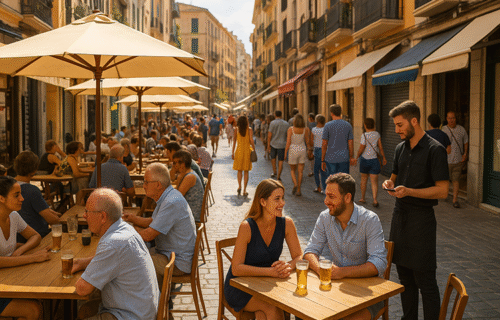Spain’s service economy continued to show resilience in August, with steady growth supported by strong tourism and stable domestic spending, even as signs of cooling momentum began to emerge.
Official data point to a small increase in overall service activity compared with the same month last year. Businesses in transport, hospitality and professional services remained among the strongest performers, while sectors more sensitive to consumer confidence — such as retail and communications — saw slower gains.
Tourism continued to be a crucial engine of recovery. Spending by international visitors climbed compared with 2024, and major tourist destinations such as Catalonia, the Balearic Islands and Andalusia recorded robust summer results. Rising daily expenditure also helped offset the impact of higher operating costs for hotels and restaurants.
Private business surveys suggest that while service companies remain optimistic, many are taking a cautious approach. Firms reported that new orders and business activity were still growing but at a slower pace than earlier in the year. Higher borrowing costs and lingering uncertainty in export markets have prompted some companies to delay hiring or investment decisions.
Spain’s labour market, however, continues to show resilience. Although August brought the usual seasonal drop in employment, underlying figures indicate that job creation in services remains solid once temporary contracts are accounted for.
Economists note that Spain’s service sector has so far managed to balance steady tourism-driven growth with the challenges of slower European demand and cost pressures. The outlook for the coming months will depend largely on whether domestic consumption can remain strong enough to counter a more uncertain global environment.
Despite hints of moderation, the data for August underline one key point — Spain’s service sector continues to act as the main pillar of the country’s post-pandemic recovery, driven by its ability to adapt, attract visitors, and sustain confidence at home.
Source: INE
